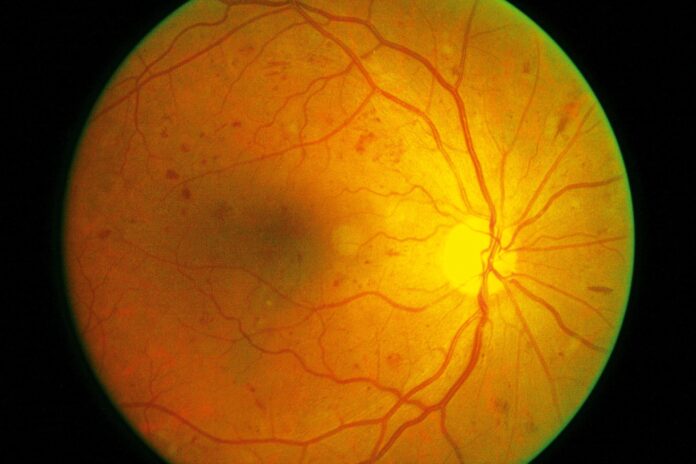
Diabetic retinopathy is a common complication of diabetes that affects the eyes and can lead to vision loss if left untreated. There are two main types of diabetic retinopathy: non-proliferative diabetic retinopathy (NPDR) and proliferative diabetic retinopathy (PDR). In this article, we will focus on understanding non-proliferative diabetic retinopathy, including its causes, symptoms, and treatment options.
Causes of Non-Proliferative Diabetic Retinopathy:
Non-proliferative diabetic retinopathy occurs when the blood vessels in the retina become damaged due to high levels of blood sugar over time. The exact mechanisms behind this damage are complex and not fully understood, but it is believed that the high levels of blood sugar can lead to inflammation, oxidative stress, and the production of abnormal proteins that can damage the blood vessels in the retina.
Other risk factors for non-proliferative diabetic retinopathy include high blood pressure, high cholesterol levels, and a long duration of diabetes. Additionally, certain genetic factors may also play a role in the development of the condition.
Symptoms of Non-Proliferative Diabetic Retinopathy:
Non-proliferative diabetic retinopathy often does not cause any noticeable symptoms in its early stages. However, as the condition progresses, the following symptoms may occur:
– Blurred or distorted vision.
– Floaters or spots in the field of vision.
– Dark or empty areas in the field of vision.
– Difficulty seeing colors.
– Vision loss.
It is important to note that these symptoms may also be signs of other eye conditions, so it is essential to seek a comprehensive eye examination by an eye care professional if you experience any of these symptoms, especially if you have diabetes.
Treatment Options for Non-Proliferative Diabetic Retinopathy:
The treatment options for non-proliferative diabetic retinopathy aim to prevent further damage to the retina and preserve vision. The following are some of the most common treatment options for the condition:
1. Blood Sugar Control:
One of the most critical aspects of managing non-proliferative diabetic retinopathy is to control blood sugar levels effectively. This may involve lifestyle changes such as healthy eating, regular exercise, and monitoring blood sugar levels regularly. In some cases, medication or insulin therapy may be necessary to keep blood sugar levels within a target range.
2. Blood Pressure Control:
High blood pressure can further damage the blood vessels in the retina, so it is essential to control blood pressure levels as well. Lifestyle changes such as reducing salt intake, exercising regularly, and taking medication as prescribed by a healthcare provider can help control blood pressure.
3. Eye Injections:
In some cases, eye injections of anti-vascular endothelial growth factor (anti-VEGF) medications may be recommended to reduce swelling and prevent further damage to the retina. These injections are typically administered in a doctor’s office and may need to be repeated regularly.
4. Laser Treatment:
Laser treatment, also known as photocoagulation, may be recommended for certain cases of non-proliferative diabetic retinopathy. This procedure involves using a laser to seal leaking blood vessels or to destroy abnormal blood vessel growth in the retina. Laser treatment can help preserve vision and prevent further vision loss.
5. Vitrectomy:
In severe cases of non-proliferative diabetic retinopathy, where there is significant bleeding or retinal detachment, a surgical procedure known as a vitrectomy may be necessary. During a vitrectomy, the vitreous gel in the eye is removed, and any scar tissue or blood is cleared from the retina. This surgery can help improve vision and prevent further damage to the retina.
It is essential to consult with an ophthalmologist or retina specialist to determine the most appropriate treatment option for non-proliferative diabetic retinopathy based on the individual’s specific condition and needs.
In conclusion, non-proliferative diabetic retinopathy is a common complication of diabetes that can lead to vision loss if not properly managed. By understanding the causes, symptoms, and treatment options for the condition, individuals with diabetes can take proactive steps to preserve their vision and lead a healthy and fulfilling life. If you have diabetes, it is essential to monitor your eye health regularly and seek prompt medical attention if you experience any changes in your vision.
By controlling blood sugar levels, managing blood pressure, and seeking appropriate treatment as needed, individuals with non-proliferative diabetic retinopathy can reduce the risk of vision loss and maintain their quality of life. Remember, early detection and treatment are key to preserving vision and preventing complications from diabetic retinopathy. If you have diabetes, schedule regular eye exams with an eye care professional and take proactive steps to protect your eye health. Your vision is precious – take care of it.












